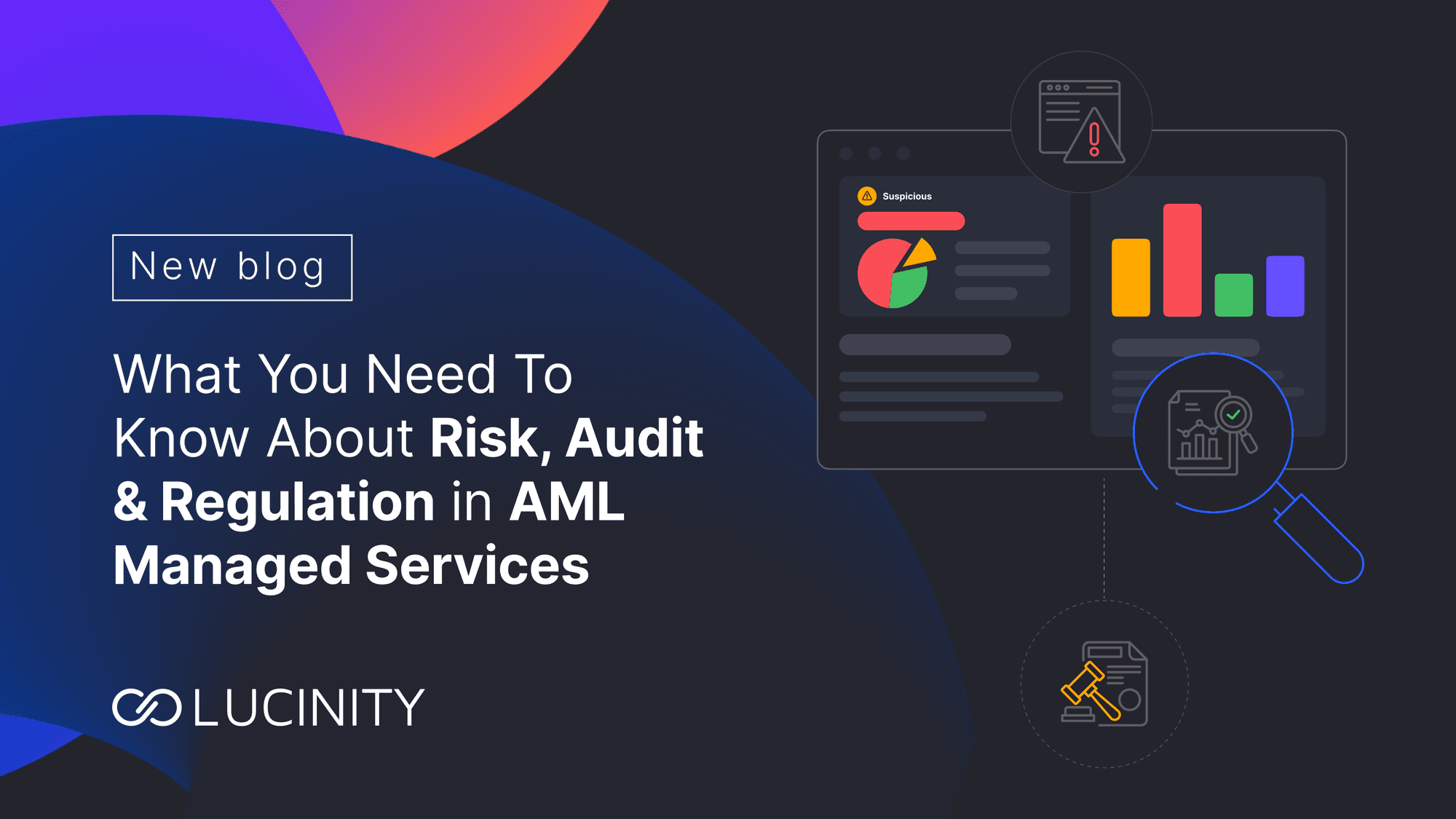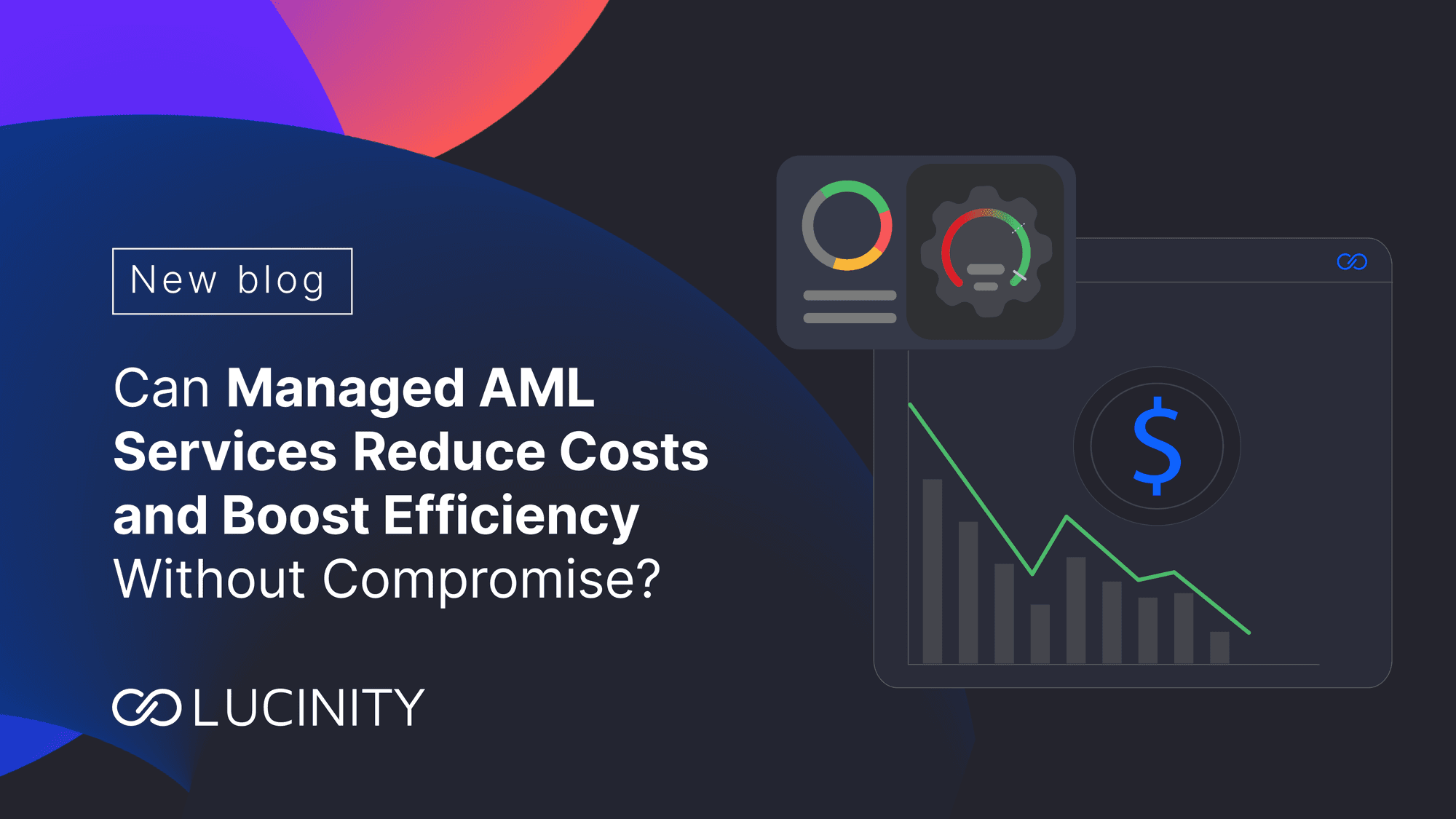How to Leverage Microsoft Azure OpenAI
In a recent webinar co-hosted by Microsoft and Lucinity, industry experts gathered to discuss how to leverage Microsoft Azure OpenAI.
In a recent webinar co-hosted by Microsoft and Lucinity, industry experts gathered to discuss how Generative AI can be leveraged by software companies. The session featured Guðmundur Kristjánsson, Lucinity's Founder and CEO, Henri Schulte, Partner Solutions Architect at Microsoft, and Ida Buhl-Andersen, ISV and Startup Territory Manager at Microsoft. This blog recaps their key insights, shedding light on the transformative power of generative AI to streamline user experience, the partnership between Lucinity and Microsoft, and Lucinity's innovative use of Azure to power the Luci copilot for enhanced financial crime prevention.
When to Use Generative AI
The advent of generative AI marks a significant leap forward in the way we interact with software. The fundamental purpose of using generative AI is to smooth out the user experience by reducing friction within software applications. Friction occurs whenever users encounter obstacles while navigating an application, whether it's difficulty accessing information or functionality. Generative AI steps in to streamline these interactions.
For instance, if users struggle to locate a feature or execute a command, like switching to dark mode, generative AI can simplify this process through intuitive prompts or automated tasks. It's about identifying areas where users face challenges and implementing AI-driven solutions to make the software more accessible and user-friendly. These tools not only enhance the user experience but also improve operational efficiency by swiftly addressing common issues that would otherwise require manual intervention.
Microsoft and Open AI Partnership
OpenAI, with its groundbreaking advancements in Generative AI, aims to ensure that these powerful technologies contribute positively to society. Microsoft, an influencer in the technology space, provides the infrastructure and reach necessary to bring these innovations to a global audience. Their collaboration is geared toward empowering every person and organization on the planet to achieve more, bridging the gap between human potential and technological innovation.
This partnership has led to the creation of diverse AI models, each with its unique purpose. GPT-4, the latest iteration in the Generative Pre-trained Transformer series, offers sophisticated language understanding and generation capabilities, making it ideal for complex tasks that require a deep understanding of context and nuance. GPT-3.5, its predecessor, laid the groundwork with slightly less advanced, yet still powerful language processing skills. Dalle-3 specializes in creating and understanding visual content, opening up new avenues for AI in image generation and analysis. Whisper, on the other hand, focuses on speech-to-text capabilities, allowing for accurate transcription and understanding of human speech across various languages and contexts. Each of these models plays a distinct role in the overarching goal of the partnership: to democratize AI and make these powerful tools as beneficial and accessible as possible.
Use Cases of Generative AI
Generative AI is reshaping the landscape of digital solutions with its multifaceted applications. A primary use case is in information retrieval, where AI can engage in conversational exchanges to fetch data across languages and from a mix of public and private sources. It can reference and pull information from various points, ensuring that users receive the most updated content. Whether it's finding a decades-old research paper or the latest market trends, generative AI can navigate the vast expanse of available data with precision.
In content development, generative AI is revolutionizing the creation process. It can write articles, generate reports, and even craft creative content like stories or poems.
Another exciting application is retrieval-augmented generation, where AI models not only retrieve information but also enhance it, filling in gaps and expanding on the data to create comprehensive and useful outputs. This is particularly useful in fields like law and medicine, where AI can provide professionals with enhanced documents that include both the retrieved facts and generative text offering explanations or additional context.
The effectiveness of these AI applications depends heavily on the reliability of the underlying data. Large language models trained on extensive and diverse datasets can perform these tasks effectively, given they have the right programming and skills infused into their systems.
Microsoft Copilot
The Microsoft Copilot (previously named Bingchat) represents a cutting-edge application of generative AI designed to enhance user interaction and productivity within digital spaces. The Microsoft Copilot is an AI-powered chat feature integrated into the Bing search engine, providing users with conversational and contextually aware responses to queries. It's akin to having a knowledgeable assistant embedded within the search engine, ready to provide detailed explanations, clarifications, and follow-up information in a natural, human-like dialogue.
On the other hand, the Copilot for Microsoft 365 is a comprehensive AI system that extends across Microsoft's suite of productivity tools. It acts as an intelligent aide within applications such as Word, Excel, and PowerPoint, facilitating the creation and editing of documents, spreadsheets, and presentations. The copilot can suggest content, help with data analysis, automate repetitive tasks, and much more, all through natural language commands.
Lucinity x Microsoft Partnership

Lucinity has strategically partnered with Microsoft to harness the robust cloud infrastructure and cutting-edge AI capabilities of Azure for the development of the Luci copilot. This collaboration has been pivotal, allowing Lucinity to utilize the vast computing resources and sophisticated AI models provided by Microsoft, which has been instrumental in the rapid deployment and scaling of the Luci copilot.
Lucinity is tackling a massive challenge in the financial industry: the costly battle against financial crime. Every year, banks spend an estimated $275 billion on FinCrime prevention, with about half of this amount going towards human capital. Despite these efforts, only $30 billion is recovered from money laundering annually. Lucinity's mission is to leverage AI to shift this paradigm, aiming to dramatically increase the efficiency and efficacy of FinCrime investigations.
By infusing AI into the investigative process, Lucinity has transformed the traditionally laborious task of sifting through data into a streamlined operation. What previously took hours can now be accomplished in minutes, thanks to the Luci copilot — an AI-powered assistant that accelerates the human investigative process. Lucinity has dedicated the last 4-5 years to developing a platform robust enough to harness the power of Microsoft and OpenAI's innovative technologies, preparing for a swift integration of the copilot once it was ready.
Meet Luci: Your AI-Powered Copilot
The Luci copilot, developed by Lucinity, is an augmented intelligence system that represents a significant leap in financial crime prevention. It functions by collating alerts and data from a diverse array of systems, including fraud detection and anti-money laundering (AML), to create cases that are primed for human analysis. The copilot streamlines the workflow of financial crime units by categorizing tasks into initial reviews, in-depth investigations, and eventual escalation to law enforcement or regulatory bodies. Recognizing that humans resonate with narratives rather than raw data, Luci transforms complex spreadsheets into compelling stories that elucidate potential money laundering activities.
The system efficiently opens and analyzes cases, condensing the time spent on preliminary documentation from minutes to seconds, which allows analysts to focus on a more in-depth customer overview. Luci is capable of deep data searches across various databases, akin to a plugin in ChatGPT, ensuring comprehensive background checks. It can continue an investigation with minimal input, provide explanations for unusual financial patterns, and summarize findings concisely.
With Luci, repeated queries become a thing of the past; its predictive model anticipates the user's needs, creating a more intuitive interaction where the AI can write emails, generate reports, or produce visual charts as required.
The crux of Lucinity's AI application lies in understanding the intent behind user interactions — a task that traditionally could take months of modeling for a single intent. Now, generative AI can interpret language into intent in mere seconds, allowing Lucinity to create a system that responds to the varying nature of conversations more effectively.
By leveraging large language models like GPT, which are trained to understand both intent and outcome, Lucinity's platform can discern user needs without relying solely on structured data. By offering a blend of freedom and guided interaction, Luci caters to the natural language processing needs of today's businesses, all while prioritizing user experience and operational freedom.
Security with Microsoft
Lucinity’s collaboration with Microsoft has been instrumental in ensuring that the security of the Luci copilot meets the highest standards demanded by customers. From the inception of the copilot prototype five years ago, Lucinity has closely monitored the evolution of OpenAI, but it was Microsoft’s integration of Azure OpenAI into their portfolio that truly escalated their excitement and development efforts. The partnership emphasizes that data security is paramount, with rigorous measures to secure user input and data processing.
One of the core functionalities of Luci is to discern the intent behind user interactions, an essential feature that ensures the AI system is being used appropriately and securely. Luci does not respond to inappropriate queries, actively preventing misuse of the generative AI capabilities. This safeguard is part of a comprehensive model that limits the scope of Generative AI to relevant and appropriate use cases, ensuring its power is harnessed responsibly.
Moreover, every response generated by Luci undergoes scrutiny to identify any anomalies in the content. The data that feeds into Luci’s prompts is structured to align with generative AI's best practices, optimizing both safety and effectiveness.
The decision to partner with Microsoft was driven by a commitment to AI safety and security, which has played a significant role in Lucinity's rapid growth and the recognition it has received, exemplified by recognitions from Gartner and Datos Insights. This focus on security is not just a technical imperative but also a foundational value that propels Lucinity forward in the competitive landscape of FinCrime prevention technology.
How to get started with Generative AI
For companies eager to dive into the world of Generative AI, Lucinity offers clear, strategic guidance to ensure a successful integration. The first step is to partner with Microsoft, a leader in cloud computing and AI technologies. Microsoft's commitment to security makes it an ideal platform for companies seeking to leverage the power of Generative AI while maintaining stringent data protection standards.
When considering the implementation of a copilot or AI assistant, Lucinity advises a thoughtful approach to its application. It's crucial to identify specific use cases where AI can add the most value. Integrating a chat interface, for example, should be more than just a novel feature; it should serve a distinct purpose, enhancing user experience and decision-making processes. One excellent implementation is the Excel copilot, which can transform mundane tasks into engaging, efficient processes.
Understanding the user's needs and how AI can expedite their workflows is key. The goal is to integrate AI seamlessly into the user's journey, making the technology a natural extension of their activities rather than an intrusive element.
To embark on this journey, Microsoft Azure offers a comprehensive starting point. Azure AI Studio serves as the gateway to all Azure AI services, providing an integrated environment where businesses can explore and deploy AI solutions. This platform simplifies the process of adopting AI technologies, offering access to a wide array of tools and frameworks developed by Microsoft.
Furthermore, the Luci copilot, developed by Lucinity, is now available on the Microsoft Azure marketplace. This accessibility enables businesses to easily incorporate Luci's advanced AI capabilities into their existing systems, leveraging its potential to enhance financial crime prevention strategies. The availability of Luci on the Azure marketplace not only underscores the collaboration between Lucinity and Microsoft but also represents a significant step forward in making advanced AI tools readily accessible to a broader range of businesses.
Learn more about the Luci copilot:





